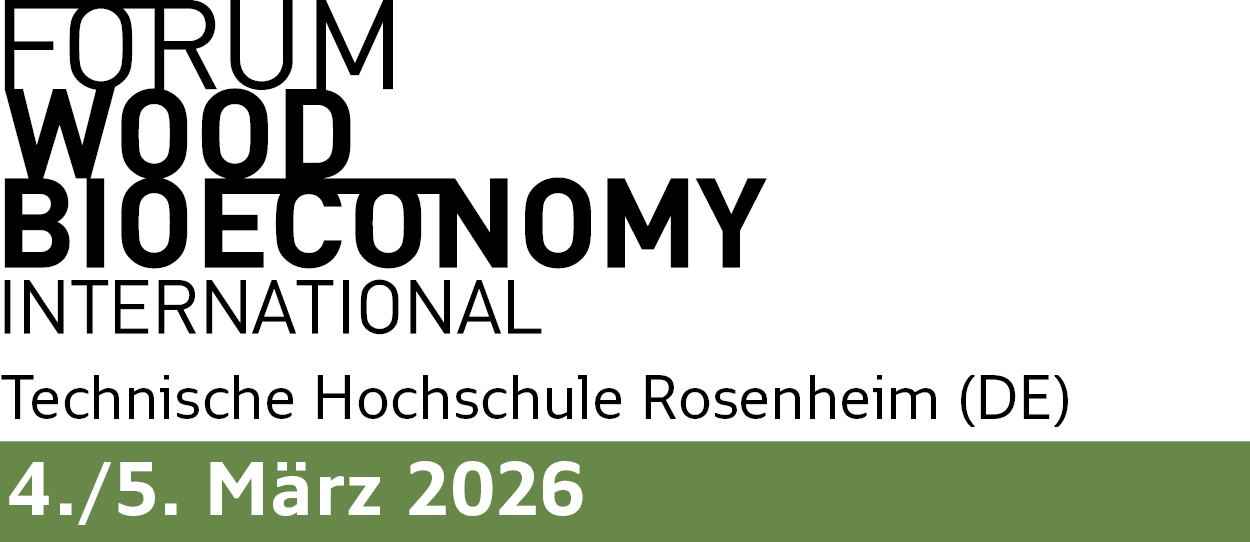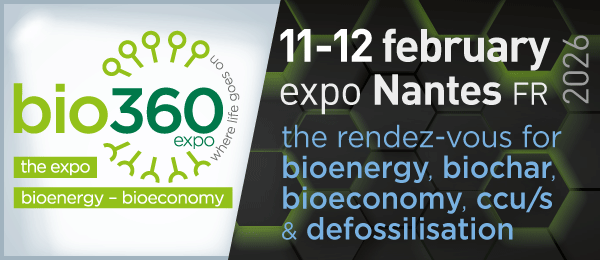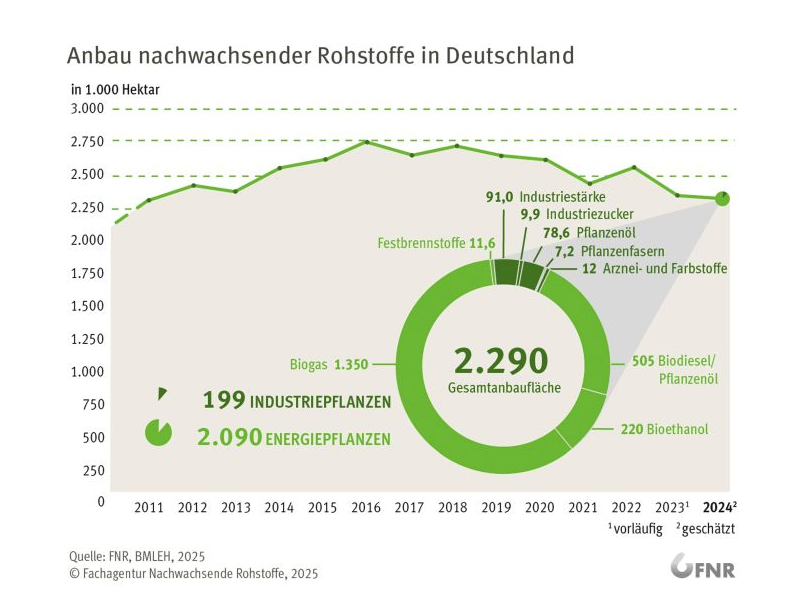
The area under cultivation for renewable raw materials (NawaRo) in Germany was estimated at 2.29 million hectares (ha) in 2024, largely on a par with the previous decade.
With a share of just under 14% of agricultural land, renewable raw materials are an important mainstay for farms in Germany. They produce raw materials for material use and biomass, the most important renewable energy source in Germany in terms of volume. At the same time, considerable quantities of by-products are produced for animal feed.
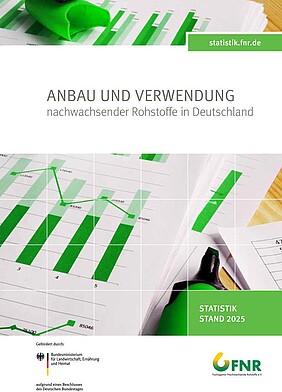
Detailed figures on NawaRo are available in the report “Cultivation and use of renewable raw materials in Germany” (only in German).
The Fachagentur Nachwachsende Rohstoffe e.V. (FNR) collects the cultivation figures for renewable raw materials in agriculture annually on behalf of the Federal Ministry of Agriculture, Food and Home Affairs (BMLEH).
At 1.35 million hectares, energy crops for biogas were once again by far the most important sector in the cultivation of renewable raw materials in 2024. Maize was once again the number one biogas crop, accounting for almost 2/3 of the area, followed by grasses/intercrops, cereals, sugar beet and cup plant.
Electricity generation from biogas fell minimally in 2024[1], while the area for biogas substrates remained largely constant. With the biomass package that came into force in February 2025, old biogas plants have now been able to maintain their business, that the energy crops are likely to remain part of agriculture in the future. After all, maize & co. have a significantly higher energy content in some cases compared to farm fertilizers such as slurry and manure.
The area under rapeseed cultivation for the material and energetic use of vegetable oils decreased compared to the previous year, similar to the total area under rapeseed cultivation in Germany, which decreased by around seven percent compared to 2023.
Domestic fiber plants occupied more arable land than in the previous year. This is due to the increasing demand for hemp fibers from sectors such as the construction, textile and automotive industries. However, with around 7,000 hectares under cultivation in 2024, hemp cultivation remains a niche market.
The growth in this area could not prevent all material crops together from occupying less land than in most previous years. Industrial sugar, starch and technical oils were less in demand in 2024 and 2023. The weak economic development in the chemical industry is also reflected here in the fields.
As a project management agency, the FNR works primarily for the BMLEH, but also for other ministries.
More Information (only in German)
- Graphic Development of the area under cultivation for renewable raw materials: https://mediathek.fnr.de/grafiken/anbau/entwicklung-der-anbauflaeche-fuer-nachwachsende-rohstoffe.html
- Table of the area under cultivation for renewable raw materials 2024: https://mediathek.fnr.de/grafiken/anbau/tabelle-der-anbauflache-fur-nachwachsende-rohstoffe.html
- Graphic Area under cultivation for renewable raw materials in Germany by crop type 2022 – 2024: https://mediathek.fnr.de/grafiken/anbau/anbauflache-nachwachsender-rohstoffe-in-deutschland-nach-kulturarten.html
- Current report on statistics: https://mediathek.fnr.de/broschuren/pflanzen/anbau-und-verwendung-nachwachsender-rohstoffe-in-deutschland.html
- Current developments and figures on the forestry & wood cluster: https://mediathek.fnr.de/broschuren/wald/charta-fuer-holz-kennzahlenbericht-forst-holz-2022-2023.html
- FNR Annual Report 2023/2024: https://mediathek.fnr.de/jahresbericht-2023-24.html
[1]https://www.umweltbundesamt.de/themen/klima-energie/erneuerbare-energien/erneuerbare-energien-in-zahlen#uberblick – Time series on the development of renewable energies in Germany
The nova-Institut presents cultivation figures for Germany over a longer period of time, based on official figures from the FNR. This graph was added to the FNR/news item for additional information.
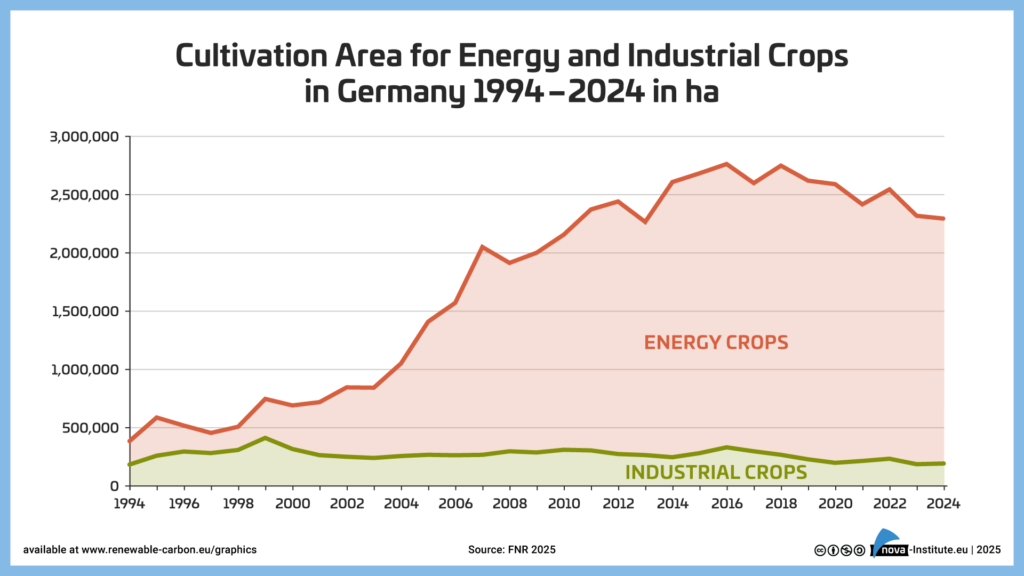
Source
Fachagentur Nachwachsende Rohstoffe e.V. (FNR), original text, 2025-05-22.
Supplier
Bundesministerium für Ernährung und Landwirtschaft (BMEL)
FNR
nova-Institut GmbH
Share
Renewable Carbon News – Daily Newsletter
Subscribe to our daily email newsletter – the world's leading newsletter on renewable materials and chemicals






